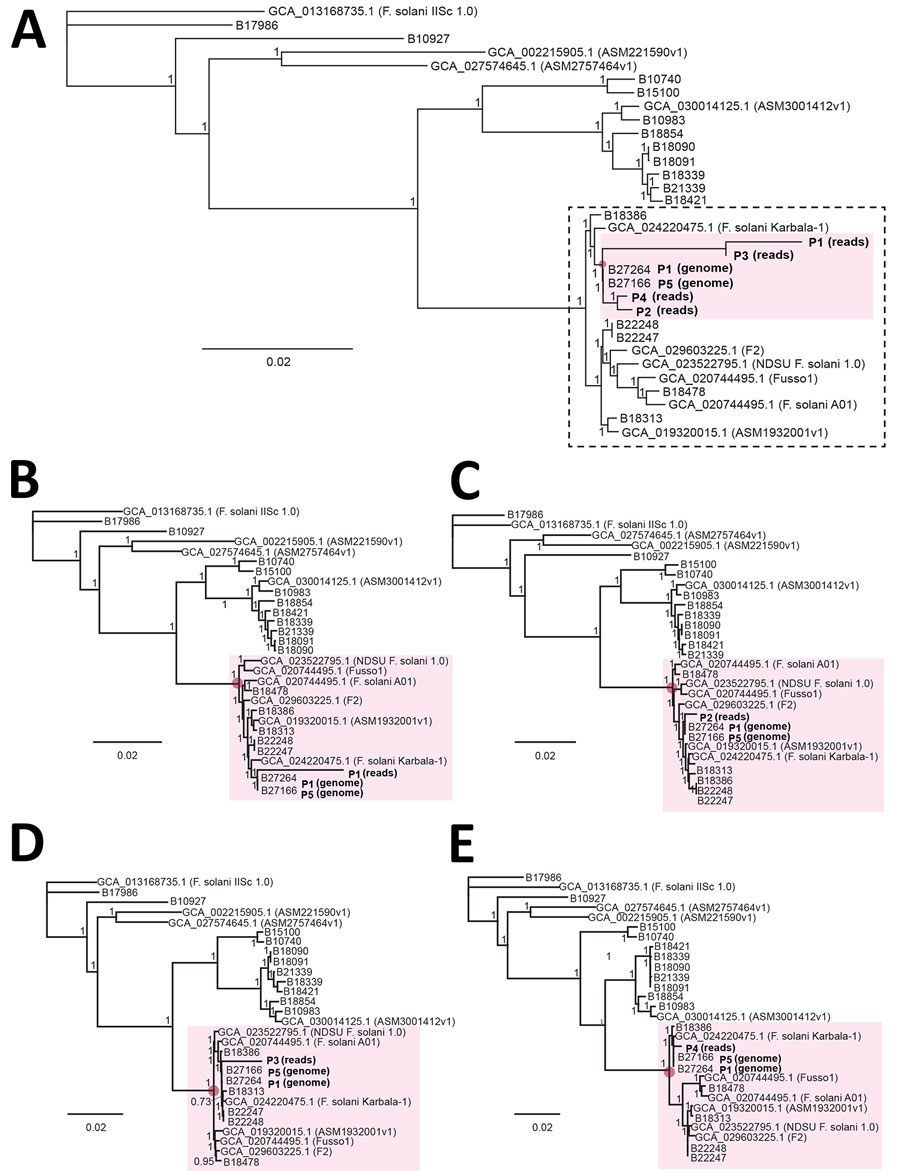Metagenomic Identification of Fusarium solani Strain as Cause of US Fungal Meningitis Outbreak Associated with Surgical Procedures in Mexico, 2023
Charles Y. Chiu

, Venice Servellita, Mikael de Lorenzi-Tognon, Patrick Benoit, Nanami Sumimoto, Abiodun Foresythe, Filipe M. Cerqueira, Natalie Williams-Bouyer, Ping Ren, Lauren Nicholas S. Herrera, David C. Gaston, Leanna Sayyad, Shannon L. Whitmer, John Klena, Holenarasipur R. Vikram, Jeremy A.W. Gold, Lalitha Gade, Lindsay Parnell, Elizabeth Misas, Tom M. Chiller, Isabel S. Griffin, Sridhar V. Basavaraju, Dallas J. Smith, Anastasia P. Litvintseva, and Nancy A. Chow
Author affiliation: Chan-Zuckerberg Biohub, San Francisco, California, USA (C.Y. Chiu); University of California San Francisco, San Francisco (C.Y. Chiu, V. Servellita, M. de Lorenzi-Tognon, P. Benoit, N. Sumimoto, A. Foresythe); Abbott Pandemic Defense Coalition, Abbott Park, Illinois, USA (C.Y. Chiu, V. Servellita, M. de Lorenzi-Tognon, P. Benoit, N. Sumimoto, A. Foresythe); The University of Texas Medical Branch at Galveston, Galveston, Texas, USA (F.M. Cerqueira, N. Williams-Bouyer, P. Ren); Vanderbilt University Medical Center, Nashville, Tennessee, USA (L.N.S. Herrera, D.C. Gaston); Centers for Disease Control and Prevention, Atlanta, Georgia, USA (L. Sayyad, S.L. Whitmer, J. Klena, J.A.W. Gold, L. Gade, L. Parnell, E. Misas, T.M. Chiller, I.S. Griffin, S.V. Basavaraju, D.J. Smith, A.P. Litvintseva, N.A. Chow); Mayo Clinic, Phoenix, Arizona, USA (H.R. Vikram)
Main Article
Figure 4

Figure 4. Phylogenetic analysis of concatenated metagenomic next-generation sequencing reads from US patients from a fungal meningitis outbreak associated with surgical procedures in Mexico, 2023. A) Phylogenetic trees showing clustering of strains from patients P1–P5 (pink shaded region) within a subclade that also includes fungal genomes unrelated to the outbreak (dotted rectangle). B–E) Phylogenetic trees of individual patients exhibiting similar topologies: B) P1; C) P2; D) P3; E) P4. Each patient is positioned in a cluster containing the same reference genomes, including the 2 outbreak genomes recovered from patients P1 and P5. Outbreak reads were mapped to corresponding regions from Fusarium solani reference genomes by using metaMELT (metagenomic multiple extended locus typing, a novel analytic technique for simultaneously diagnosing the infection and characterizing the interrelatedness of F. solani strains). Scale bars indicate nucleotide substitutions per site. P1–P5, patients 1–5.
Main Article
Page created: March 21, 2025
Page updated: April 25, 2025
Page reviewed: April 25, 2025
The conclusions, findings, and opinions expressed by authors contributing to this journal do not necessarily reflect the official position of the U.S. Department of Health and Human Services, the Public Health Service, the Centers for Disease Control and Prevention, or the authors' affiliated institutions. Use of trade names is for identification only and does not imply endorsement by any of the groups named above.
